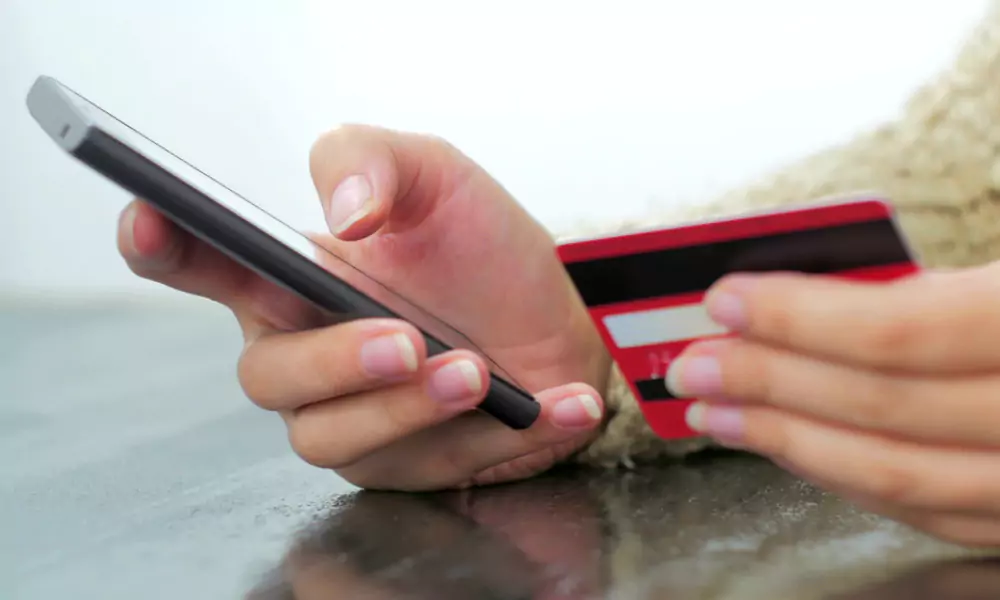Now that the deadline for card issuers and merchants to adopt EMV card technology has come and gone, it is important for organizations to work on improving security for transactions. In addition to new credit and debit cards being issued by banks and financial institutions, merchants are investing in updated card readers that accept both EMV cards and those with magnetic stripes. However, there is a growing trend among consumers that has more transactions being completed using a mobile device. With more customers willing to adapt to mobile payments, merchants must stay ahead of the curve, in terms of mobile and EMV, with mobile credit card readers. How are businesses that rely on mobile payments handling the EMV transition?
Consumer Trends When It Comes to Mobile
According to MasterCard’s 2015 study titled “The Emotion of Safety and Security Survey,” 77 percent of Americans feel that there are more secure ways to pay than ever before. This includes through EMV cards, which use chip-and-PIN or chip-and-sign authentication to reduce the risk of fraud through data breaches and card cloning. In addition, consumers are loading their chip-enabled cards into mobile wallets in order to pay via NFC. At the end of the day, consumers want to find the easiest and most secure way to make payments, while also avoiding friction caused by processing delays and data breaches.
While it is still yet to be seen how effective EMV card security will be in the United States, it is safe to say that there are consumers using a variety of payment methods in order to find the best solution. In addition to using the age-old method of swiping a credit card, customers today are inserting cards into EMV readers, typing card information into online shopping solutions, and paying via small readers attached to a merchant’s mobile device.
In order to combat fraud, merchants and financial organizations are doing more than just waiting for EMV cards to take control of the market. Instead, they are working with payment processors on ways to securely transmit so that account information is kept behind firewalls, and no card details are stored locally or in a way that makes it easy for hackers to obtain them. The recent liability shift for fraudulent purchases has given merchants and processors the opportunity to make significant upgrades in old hardware and practices to help eliminate growing security concerns.
The Liability Shift and Security Concerns
On October 1, 2015, a fraud liability shift took place in the United States, as merchants and financial organizations around the country move toward the adoption of EMV chip technology. What this essentially boils down to is that merchants who do not upgrade their equipment to accept EMV cards are now liable for fraudulent purchases that occur due to their older readers. As more merchants move to upgrade their readers, they are finding that the time is right to address other security concerns, as well.
New card readers that allow merchants to accept EMV and mobile payments open up new revenue streams that were nonexistent even a few years ago. The key is finding a solution that uses encryption and tokenization of card data in order to guard against fraud at the point of sale. At the same time, educating consumers on the benefits of mobile payments and the proper use of their EMV card in the United States is equally important. Since nearly all EMV cards issued in the U.S. also contain a magnetic stripe, many consumers swipe their card through a reader out of habit, which in turn puts them at the same risk of identity theft and fraud as before.
EMV cards also have the entire credit account number printed on the front in addition to the stripe. If a card is lost or stolen, it is still relatively easy for a criminal to use the card in a store or online. Combine a stolen EMV card with a merchant that hasn’t upgraded to an EMV reader, and the environment is just right for fraud to continue unchecked. Mobile credit card readers provide merchants and small business owners with a dynamic solution that helps increase data security at a number of different points. From the initial acceptance of a card at the point of sale, to the payment approval and beyond, customer payment information is safely and securely transmitted, encrypted, and stored.
Investing in Mobile EMV Card Readers
Being able to accept EMV cards is now a necessary part of doing business for merchants in any industry. In addition to ensuring that your cash registers are equipped with credit card readers that can process EMV transactions, you want to be able to capture business no matter what. If you do not have a traditional cash register set up, your credit card processing company can assist with mobile EMV readers that connect to your smartphone or tablet.
Restaurants, hotels, and other service industry businesses can also create their own register system using an iPad, a mobile card reader, and an integrated POS system, such as those sold and supported by Leap Payments. The goal is to be able to make it as simple as possible for your customers to pay for your products or services. For merchants and consumers, this means investing in a solution that provides the best of both worlds: one that accepts both mobile payments and EMV cards.
According to Payment Week, there were only about 300,000 merchants in the United States that had enabled contactless mobile payments prior to the release of Apple Pay. Understanding how your customers want to pay, while also protecting yourself against the threat of fraud and risk associated with the liability shift puts you in a position to be successful moving forward.
How Do Mobile Payments Work?
By implementing new credit card readers that accept EMV chip cards, small business owners also open up the possibility of accepting mobile payments. Services such as Apple Pay and others allow customers to create a digital “wallet” that contains their credit card information on their smartphone. When a customer is ready to pay for his or her items, he or she places the smartphone near the card reader, and NFC technology transmits the payment details from the wallet to the POS.
This helps reduce the risk that customers face when swiping their credit card or inserting an EMV card into a reader at a business. In some instances, customers are required to hand a credit card to a representative, such as when checking in at a hotel or renting a car, and are powerless if that person copies down card information. Mobile payments enhance security for payments because authentication only takes place inside of an encrypted environment where merchants are provided authorization tokens. Since there is no valuable information stored on a phone or delivered to the merchant, there is nothing to be stolen by a criminal.
A customer can input an EMV card into Apple Pay and other NFC payment systems, further encrypting and securing account information. As previously mentioned, investing in new card readers that are EMV and PCI compliant also helps merchants reach customers that are using mobile payments more than ever before. Mobile credit card readers that accept EMV cards will reduce instances of suspected fraud from duplicated credit cards, while mobile payment technology creates a frictionless experience for all of your potential customers.




